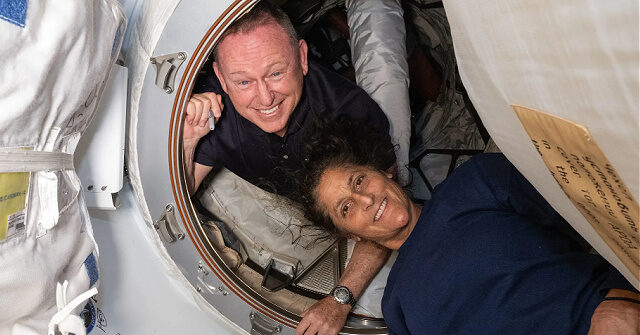NASA astronauts Butch Wilmore and Suni Williams, who have been stationed on the International Space Station (ISS) since their launch on June 5, 2024, will have their return to Earth delayed following the postponement of SpaceX’s Crew-10 mission, now scheduled for at least March 2025. The crewed mission originally slated for February 2025 was pushed back to allow more time for the development of a new Crew Dragon spacecraft. This change in schedule has significant implications for the astronauts, who were initially expected to spend a much shorter duration in orbit.
Wilmore and Williams were participating in the first crewed mission aboard Boeing’s Starliner capsule. However, due to unforeseen vehicle complications and safety concerns, the Starliner was unable to safely bring them back, leading to their integration into SpaceX’s Crew-9 mission. Their extended time aboard the ISS is now expected to last approximately nine months, which is significantly longer than their initial 10-day mission duration. While extended stays in space pose challenges, they are not without precedent; previous astronauts, such as Scott Kelly and Frank Rubio, have spent considerably longer durations aboard the ISS due to various circumstances.
SpaceX’s Crew-9 mission, which involved the Crew Dragon capsule named Freedom, launched successfully to the ISS in September 2024. However, adjustments had to be made to accommodate the return of Wilmore and Williams. Consequently, two astronauts—NASA’s Nick Hague and Russian cosmonaut Aleksandr Gorbunov—were the only ones to launch aboard Crew-9, while NASA astronauts Zena Cardman and Stephanie Wilson were removed from the mission to make room for Wilmore and Williams. This reshuffling underscores the logistical complexities of crew management in space missions.
The upcoming Crew-10 mission will introduce a new Crew Dragon spacecraft, marking the fifth addition to SpaceX’s fleet. This expansion in the available spacecraft aims to provide enhanced flexibility and capacity for both SpaceX and NASA regarding future crew missions and commercial offerings. Had this new Crew Dragon been ready earlier, it is conceivable that Wilmore and Williams might have completed their return to Earth sooner, minimizing their extended stay on the ISS. Steve Stich, the manager of NASA’s Commercial Crew Program, expressed gratitude for the SpaceX team’s efforts in expanding the Dragon fleet.
Crew-10 is now expected to launch in late March 2025 with a crew consisting of NASA astronauts Anne McClain and Nichole Ayers, Japan Aerospace Exploration Agency (JAXA) astronaut Takuya Onishi, and Russian cosmonaut Kirill Peskov. If all goes according to plan, the Falcon 9 launch for Crew-10 will facilitate the return of the Crew-9 astronauts in early April 2025. This transition period is critical as it allows for an overlap where operational responsibilities and station control are transferred smoothly from the outgoing crew to their successors.
Overall, the situation with Wilmore and Williams highlights the inherent unpredictability and challenges faced within space exploration programs, especially in commercial partnerships like that between NASA and SpaceX. Although the delays are disappointing, they also illustrate the resilience and adaptability of the involved teams as they work together to navigate these complexities while ensuring the safety and success of their missions.

